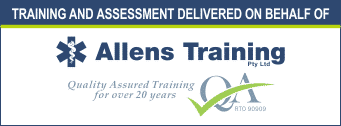You’ve probably heard the term “duty of care” plays a significant role in first aid, especially if you’re designated as a workplace first aider. While Duty of care might sound a bit official, but it’s really about looking out for others and doing what you can to keep them safe. Whether you’re a trained first aider or just someone who wants to lend a hand, knowing your responsibilities can make all the difference. So, let’s dive into what duty of care means when providing first aid, with some friendly advice and practical tips along the way.
What is Duty of Care in First Aid?
Simply put, duty of care is about being responsible for others’ well-being and taking steps to keep them safe. In first aid, it means you have a legal and moral obligation to help someone who’s hurt or sick, doing the best you can with what you know.
For those of us in Brisbane, Queensland guidelines state that if you’re a designated workplace first aider, you have a legal obligation to assist others if they get injured at work. This isn’t just about being a good person; it’s a requirement by law. But outside of work, while you’re not legally bound, most of us would feel a moral pull to help out if we can.

How to show you care
When you step in to provide first aid, you take on some responsibilities. Here’s what that looks like:
Legal Responsibilities
- Do No Harm: Your main job is to make sure you don’t make things worse. Stick to what you’ve been trained to do.
- Consent: If the injured person is conscious, ask if it’s okay to help. If they’re unconscious, it’s assumed they would want you to help.
- Confidentiality: Keep the person’s details private. Don’t share what happened with others unless it’s necessary.
- Report and Record: If you’re at work, let the right people know about the incident and keep a record of what happened.

Moral Responsibilities
- Act with Compassion: Be kind and gentle. The person you’re helping is likely scared and in pain, and your calm demeanor can provide great comfort.
- Stay Calm and Focused: Panicking can make things worse. Take a deep breath, assess the situation, and act methodically.
- Stay Informed and Trained: Regularly update your first aid knowledge and skills. First aid techniques and guidelines can change, so it’s important to stay current.
Make a difference
When providing first aid, following certain principles can help ensure you are giving the best care possible while fulfilling your duty of care.
Prioritize Safety
Your safety comes first. Before rushing to help, ensure that the environment is safe for you and the injured person. If there are potential hazards, address them or wait until it’s safe to proceed.

Assess the Situation
Quickly but calmly assess the situation to understand what kind of help is needed. Look for any obvious injuries, check if the person is conscious, and see if they are breathing properly.
Use Proper Techniques
Always use techniques that you have been trained in. Improper methods can cause more harm than good. Stick to the basics and perform them well.
Communicate Clearly
Keep the injured person informed about what you’re doing. This helps to calm them and ensures they understand the care they are receiving. If there are bystanders, delegate tasks to them, such as calling emergency services or retrieving first aid supplies.
Monitor the Person
Keep a close eye on the injured person’s condition. Look for any changes in their symptoms and be prepared to adjust your care as needed. If the situation worsens, seek professional help immediately.
Provide Comfort
Sometimes, just being there for someone can make a big difference. Offer words of comfort and reassurance. A calm and soothing presence can help reduce panic and stress.
Know Your Limits
Recognize the limits of your training and abilities. If the situation is beyond what you can handle, seek professional help immediately. It’s better to call for assistance than to attempt something you’re not trained to do.
Continue Care Until Help Arrives
Once you begin providing aid, do not abandon the person until professional help takes over or the situation is resolved. Continuity of care is crucial to avoid complications and ensure the injured person receives the best possible outcome.
Conclusion
Understanding the duty of care when providing first aid is not just about following rules; it’s about being prepared to help others in their time of need. Whether it’s a minor scrape or a more serious injury, knowing what to do can make a significant difference.
Remember, your calm presence and knowledgeable actions can provide comfort and safety to those around you. So, keep learning and stay prepared, because you never know when you might need to provide first aid.
Looking for top-notch first aid training with rave reviews and conveniently locations? Our courses are designed to equip you with essential first aid skills through comprehensive, hands-on courses led by experienced instructors.
With multiple locations through Brisbane, we make it easy for you to find a class that fits your schedule. Join us and become a confident first aider, ready to handle emergencies with ease and expertise. Discover why we’re the best reviewed and most convenient choice for your first aid training needs.






